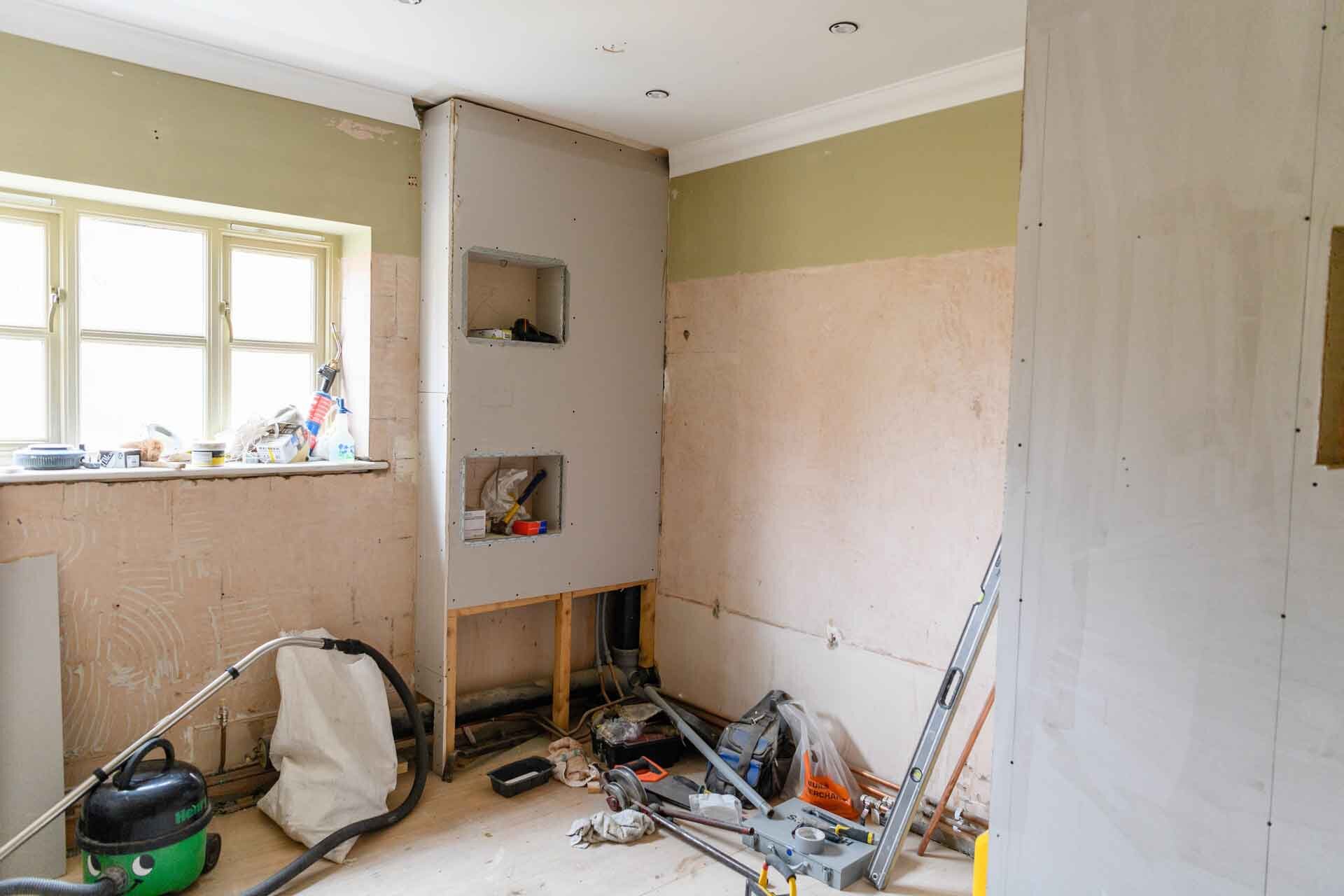Selling a House with Unpermitted Work in Southern California can pose major challenges for homeowners when it’s time to put their property on the market. Unpermitted work—sometimes called unauthorized, unapproved, or undocumented improvements—encompasses any additions, remodels, or structural changes completed without acquiring the required authorization from local building authorities. Although such modifications might improve your living space, they can introduce unexpected issues for prospective buyers, as well as for mortgage lenders and property inspectors.
In this expanded guide, we’ll cover what it means to have un-permitted work on your property, why it matters to both sellers and buyers, and how to address it effectively. You’ll learn the essential steps for obtaining retroactive permits, the potential consequences of leaving un-permitted work unresolved, and insights into when a permit is actually needed. Understanding these factors can help you navigate the home-selling process more smoothly, whether you plan to legalize the work or sell the property as-is.
How to Get a Permit After Work Has Been Done
Securing official permits for projects that are already completed can feel overwhelming, but it’s often a necessary step to mitigate future legal or financial setbacks. Here are the main actions to take:

Assess the Situation
First, examine all areas of your home to identify any modifications made without an approved permit. This might include expansions like enclosed patios, basement conversions, or additions that changed the layout of the property. Consult a trusted home inspector or licensed contractor to confirm the scope of unpermitted work. Their assessment helps you understand what needs to be addressed to meet current building codes.

Contact the Local Building Department
Next, contact your local building department or city planning office. Provide clear details about the renovations completed without permits. Different jurisdictions have varying guidelines for retroactive permitting, so it’s crucial to obtain exact instructions relevant to your neighborhood. Building officials often have checklists or brochures that explain each required step.

Prepare Documentation
Gather as much evidence of the completed work as you can. This should include floor plans, sketches, receipts for materials, and any engineering diagrams if needed. Comprehensive documentation speeds up the review process by helping inspectors understand what was done and how.

Submit Permit Applications
After compiling the required paperwork, file permit applications with the building department. Application fees vary widely, so be prepared for costs that correspond to the scale of the unpermitted work. Submitting accurate descriptions of the completed changes can minimize delays during the review. If needed, consult an architect or builder to ensure your materials are up to professional standards..

Schedule Inspections
Officials will likely require on-site inspections to confirm your property now meets the standards outlined in local building codes. Depending on the complexity of the work, you might need multiple inspections at different stages. For instance, if you installed new wiring, an electrical inspector may need access to junction boxes or circuit panels. Be prepared to coordinate your schedule to accommodate these visits.

Make Necessary Corrections
If inspectors find code violations or safety issues, they will provide guidelines for how to fix them. These fixes might be as simple as adding a smoke detector or as extensive as rewiring electrical systems. Hiring licensed professionals to perform these corrections can save time and help ensure that your house meets regulations. Once the issues are resolved, inspectors will revisit the property to verify the corrections.

Obtain Final Approval
After all necessary updates pass inspection, the building department issues final approval or a certificate of occupancy if that applies in your locale. This official sign-off indicates your home complies with regional building standards. Having such documentation can boost confidence among potential buyers, as it proves the house’s improvements meet the required codes and won’t trigger future permitting headaches.
Get an offer today, sell in a matter of days.
We buy houses in ANY CONDITION! We pay CASH and you will not pay any commissions, agents, or fees. Put your address and email below and answer 5 easy questions on the next page to get a cash offer in 24 hours!
Consequences of Unpermitted Residential Work
Unpermitted work can create significant roadblocks, both financially and legally. Although you might not see the full impact until you try to sell, these issues can develop at any point:
Legal and Financial Risks
Local authorities may impose fines if they discover your unpermitted modifications. In extreme cases, they might require you to remove unauthorized additions or bring everything into compliance quickly, often at considerable cost. Repeated infractions could lead to additional sanctions or legal action, complicating the process of transferring property ownership.
Reduced Property Value
Homes with unpermitted work can be viewed as riskier investments by buyers. Some may worry about hidden structural deficiencies or potential future expenses to legalize or correct the work. As a result, they may make lower offers or request price concessions to offset these concerns. This effectively reduces your property’s market value.
Difficulty Obtaining Financing
Lenders typically require properties to be code-compliant before granting mortgages. When unpermitted modifications exist, prospective buyers might find that their lenders hesitate to approve the loan unless the issues are addressed. This situation narrows your pool of qualified buyers and can extend the time your house remains on the market, as you wait for someone willing to purchase with cash or with a lender who overlooks minor compliance problems.
Complications During Home Inspections
Home inspectors are trained to spot irregularities, such as walls that appear recently added without evidence of a permit, or strange wiring that may not follow typical building practices. These findings can raise red flags for buyers, prompting them to either withdraw their offer or demand lower prices to account for possible corrections down the line.
Liability Issues
If any incidents, such as fires or injuries, stem from unapproved work, you could be exposed to liability lawsuits. Insurance companies might also contest claims related to damages involving unpermitted additions, arguing that the improvements were never officially sanctioned and thus not covered by your policy.
Increased Insurance Premiums
Even if your insurer provides coverage, unpermitted improvements often result in higher premiums. Insurers see these projects as more likely to produce safety or structural complications, which translates to elevated risk. Some companies might even cancel policies upon discovering significant unauthorized renovations.
When a Permit is Required for Home Repairs
Understanding which projects call for permits is essential to avoid penalties and ensure your home meets safety standards. Although exact rules differ by region, here are some general guidelines:
Common Home Repairs Requiring Permits
- Structural Changes: Removing load-bearing walls, installing support beams, or altering the home’s foundational elements.
- Electrical Work: Replacing outdated wiring, adding new circuits, or moving breaker panels.
- Plumbing Work: Installing new sewer lines, repositioning pipes, or adding major plumbing fixtures like bathtubs.
- HVAC Systems: Placing or modifying heating, ventilation, or air conditioning units, along with associated ductwork.
- Additions: Building extra rooms, expanding living spaces, or constructing detached additions like garages or sheds with utilities.
- Roofing: Major repairs or complete replacements that affect the structural integrity of the home’s roof system.
- Windows and Doors: Enlarging openings or switching out a standard door for sliding glass that alters framing.
- Decks and Patios: Erecting new outdoor platforms that require footings or structural supports.
Minor Repairs Typically Not Requiring Permits
- Painting and Wallpapering: Cosmetic tasks that don’t involve electrical or structural changes.
- Flooring: Swapping out carpet for hardwood or tile, provided you don’t alter subfloor supports.
- Minor Plumbing Repairs: Simple tasks like replacing a faucet or unclogging a drain line.
- Landscaping: Planting trees and shrubs or performing routine yard maintenance without major land grading.
How to Check House Permits
Confirming your home’s permit status before listing it can help you anticipate potential buyer objections and streamline the sale:

Contact the Local Building Department
An effective first step is calling or visiting the building department in your jurisdiction. They usually maintain records for each address, noting every permit issued and when final inspections took place. Staff members can provide clarity on what remains unpermitted.

Use Online Permit Databases
Some cities have digital platforms where homeowners can search for permit history by entering their address. If available, this can be a quick way to gather essential information without leaving home.

Review Property Records
Property documents, including title reports and previous appraisals, sometimes mention specific renovations completed under valid permits. Checking these records can be especially useful if you’ve owned the house for a long time or purchased it from someone else who made undocumented alterations.

Hire a Professional Inspector
If you prefer an expert opinion, employ a certified home inspector. They can identify indications of unpermitted work—such as mismatched construction styles—and advise you on whether obtaining retroactive permits is advisable before listing your home.
The Permitting Process
Whether you’re playing catch-up on unpermitted changes or starting a new project:

Determine Permit Requirements
Consult local guidelines or talk directly with a permit office representative to learn which permits apply to your property’s scope of work. Different improvements, from minor electrical additions to full-scale room expansions, can have distinct requirements.

Prepare Permit Applications
Compile any necessary blueprints or diagrams, along with detailed project descriptions. If you’re retroactively legalizing past work, be transparent about the extent and purpose of each change.

Submit Applications and Pay Fees
When you submit your permit forms, you’ll likely pay application fees that reflect the complexity or cost of the project. Hold onto your receipts and a copy of all documents, in case you need them later.

Schedule Inspections
Once your application is approved, you’ll receive a timeline for any required inspections. These visits confirm that the work, whether finished or in-progress, aligns with safety standards.

Make Necessary Corrections
If inspectors find elements that violate codes, you must fix those shortcomings and potentially schedule an additional inspection to confirm the corrections.

Obtain Final Approval
When all steps are completed successfully, you’ll receive final authorization from the building department—often known as a “close-out” or “final sign-off.” This document shows that your improvements meet legal requirements.
Associated Costs
Resolving unpermitted work or preparing for new permits involves fees, inspections, and potential corrections:
Permit Application Fees
Fees depend on project size and complexity. For something small like adding a simple wall, the cost might be minimal, whereas large-scale structural changes can accrue higher charges.
Inspection Fees
In some areas, inspections are included in the initial permit fees; in others, each inspection can carry a separate cost. Additional or repeat inspections may add up if the code violations are extensive.
Correction Costs
Hiring contractors or specialists to fix identified issues often becomes the most substantial expense. Costs can range from minor material purchases to extensive structural or mechanical overhauls.
Penalties and Fines
Should officials discover you’ve done work without authorization, you could face fines. The severity typically corresponds to how long the unpermitted work has been in place and its potential safety risks.
Professional Fees
Bringing in architects, engineers, or specialized contractors can streamline the process and raise confidence that the work will pass inspection. However, their professional expertise comes at an added price.
How Bright Idea House Buyers Can Help
At Bright Idea House Buyers, we understand that unpermitted work can become a significant burden, both in terms of money and time. Our goal is to simplify the home-selling process by offering cash deals for properties in any condition, including those with incomplete permits or noncompliant renovations. Consider these benefits:
- Quick and Fair Offers: Instead of spending months handling retroactive permits, we can present you with a competitive offer, helping you avoid a drawn-out listing period.
- No Permitting Hassles: Because we buy homes as-is, you don’t have to scramble to correct violations or coordinate with contractors and inspectors.
- Streamlined Process: Traditional buyers might back out if they discover unpermitted modifications. With Bright Idea House Buyers, you can sidestep that risk and finalize your sale with less stress.
By choosing Bright Idea House Buyers, you can avoid the complications and expenses associated with unpermitted work, making it easier to sell your house quickly and efficiently.
Selling a house with unpermitted work involves navigating a complex and often costly process. From obtaining permits after the work is done to dealing with potential consequences, it’s essential to understand the steps involved and the associated costs. However, if you prefer a hassle-free solution, Bright Idea House Buyers offers a convenient option by purchasing properties as-is. Contact us today to learn more about how we can help you sell your house without the stress and financial burden of dealing with unpermitted work. (424) 625-7026
We buy houses in ANY CONDITION! We pay CASH and you will not pay any commissions, agents, or fees. Put your address and email below and answer 5 easy questions on the next page to get a cash offer in 24 hours!

